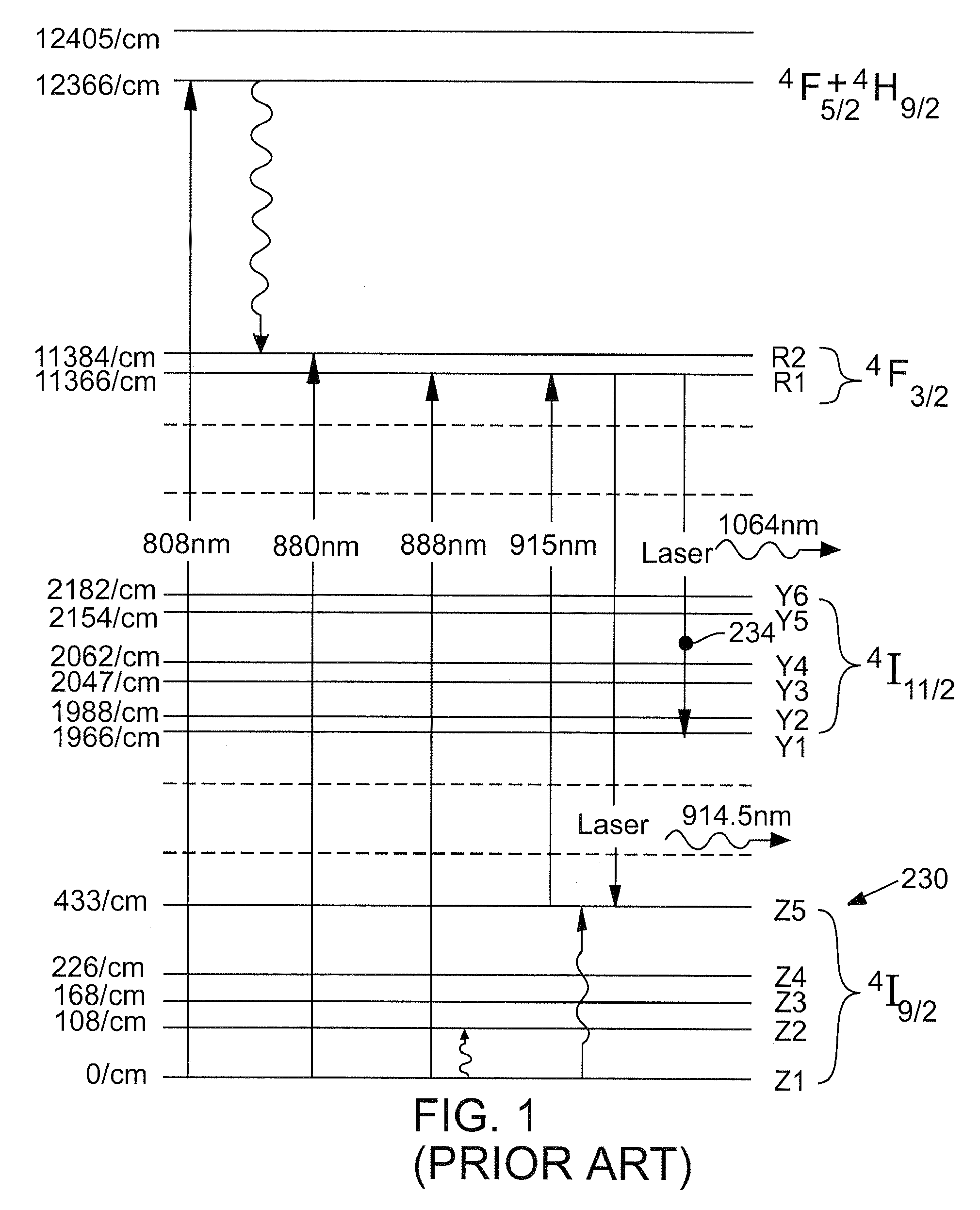Laser with highly efficient gain medium
a laser and gain medium technology, applied in the direction of laser details, active medium materials, semiconductor lasers, etc., can solve the problems of reduced pumping efficiency, poor thermomechanical properties of vanadate, and easy fracture of material, so as to improve pump power absorption and gain, reduce thermal lensing, and increase pump power.
- Summary
- Abstract
- Description
- Claims
- Application Information
AI Technical Summary
Benefits of technology
Problems solved by technology
Method used
Image
Examples
Embodiment Construction
[0044]FIGS. 6-12 demonstrate relevant aspects of pumping vanadate crystals at various wavelengths. A significant difference between the two absorption curves in each drawing indicates asymmetric absorption, i.e., more energy is absorbed for pumping light polarized in the c-axis direction than in the a-axis direction. The broad pumping wavelength spectrum (800 nm-920 nm) shown in FIG. 12 indicates that absorption symmetry improves dramatically above about 880 nm (i.e., at 888 nm and 914.5 nm). At the 888 nm and 914.5 nm wavelengths, spectral profiles 219a and 219c and spectral profiles 220a and 220c for the respective orthogonal a- and c-crystal lattice axes nearly coincide, although the total absorption is less than 5%.
[0045]Absorption spectra for two embodiments, Nd:YVO4 and Nd:GdVO4 crystals, pumped at 914.5 nm, represent results of two different measurement methods. With reference to FIGS. 6 and 7, the first method is a direct measurement of absorption spectra. The data in FIG. 6...
PUM
 Login to View More
Login to View More Abstract
Description
Claims
Application Information
 Login to View More
Login to View More - R&D
- Intellectual Property
- Life Sciences
- Materials
- Tech Scout
- Unparalleled Data Quality
- Higher Quality Content
- 60% Fewer Hallucinations
Browse by: Latest US Patents, China's latest patents, Technical Efficacy Thesaurus, Application Domain, Technology Topic, Popular Technical Reports.
© 2025 PatSnap. All rights reserved.Legal|Privacy policy|Modern Slavery Act Transparency Statement|Sitemap|About US| Contact US: help@patsnap.com



